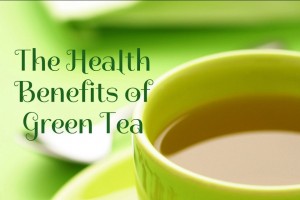By Katrin Geist
Guest Writer for Wake Up World
Tea is one of the oldest drinks (used for almost 50 centuries in Asia) and – after water – the most common beverage people enjoy the world over (Mandel et al. 2008). Native to China, it comes from the evergreen plantCamellia sinensis. A cup of tea contains numerous compounds in varying quantities: vitamins, polyphenols, caffeine, fluoride, sugars, amino acids, proteins, minerals, chlorophyll and others (Zhao et al. 2013). Which tea is produced (white, green, oolong or black) depends on the subsequent processing of harvested Camellia leaves. Teas can be classified as non-fermented (green and white teas), semi-fermented (oolong tea), and fermented (black tea).
The health promoting effects of green tea are attributed to the rich antioxidant polyphenol content of its leaves (flavonols & catechins), making up c. 30% dry weight of a tea leaf, and exhibiting biochemical and pharmacological activities (Siddiqui et al. 2006). Recently, many of these beneficial effects were traced back to the most abundant catechin, EGCG (Wolfram 2007).
[pro_ad_display_adzone id=”110028″]
White tea differs from green tea by only using buds or first leaves. Green tea is rich in catechins. Black tea contains high levels of bisflavanol, theaflavin, and thearubigin, whereas white tea possesses large amounts of epigallocatechin-3-gallate or EGCG, epicatechin, and methylxanthine (Zhao et al. 2013).
And just like a good wine, geographic location, soil and growing conditions play a role in tea quality, too. Tea leaves are heated and dried to inactivate enzymes, thus preserving constituents until we come along to make a brew by simply adding hot water.
The convenience of tea bags comes for the price of much reduced quality: tea bags usually contain shredded bits of tea hardly deserving the name. I generally avoid tea bags. Loose leaf tea just tastes so much better. As a rule of thumb, the bigger the leaf, the better and more tasty the tea. Tea bags either contain chemicals (epichlorohydrin) to prevent the paper from disintegrating in water, or are made from plastic including potentially harmful substances. Both are not the best choice. No need to ingest anything that doesn’t naturally belong in the body. Exercising that control whenever you have it makes not only sense, but also for a much healthier body.
Three billion kilograms of tea are grown and processed worldwide annually (Ohsaki Study 2006). People in about 30 countries are the main tea consumers. Green tea, specifically, is most commonly used in Asia (c. 20%), whereas Westerners prefer black tea (c. 78%).
So why go green?
Green tea is traditionally associated with various health benefits, and science, mostly since 1995, begins to confirm its beneficial effects on inflammation, arthritis, bacterial and viral growth inhibition, various cancers, eliminating toxins, the cardiovascular system, gums and teeth, the nervous system, and others. There are over 12.000 published (peer reviewed) articles on green tea. The search ‘green tea benefits’ on Web of Science returned 711 papers, a few of which form the basis of this article.
Tea variety and preparation method (at the growers and at home) also matter in bringing out the beneficial influence green tea bestows on our body (Shishikura & Khokhar 2005), as does bioavailability: we can ingest something, yet is it readily available to our cells in that form? If yes, it’s bioavailable, i.e. the body can use it straight away. If not, it may go right through without affecting anything. This is the reason why some supplements do not work – they are not presented in the right (bioavailable) form to the body. In green tea, bioavailability of catechins is directly proportional to the amount consumed (Reygaert 2014).
The following lists some of the benefits you may gain when regularly drinking green tea (multiple cups a day).
1. Decreasing cardiovascular mortality and risk of developing hypertension
Evidence from epidemiological studies suggests that the habitual consumption of green tea inversely relates to cardiovascular mortality, mortality from stroke, the risk of developing diabetes and hypertension, and also to the percentage of body fat and its distribution (long-term tea drinkers are less obese) (Wolfram 2007).
A cohort study in over 40.000 Japanese adults found a reduced mortality rate from cardiovascular disease by 26% in green tea drinkers consuming 5 or more cups per day compared to those drinking 1 cup or less a day. Mortality from stroke was reduced by 37%. This study also found a positive dose/ response relationship: the more green tea people drank, the less likely they were to die from cardiovascular causes (Ohsaki Study 2006).
Epidemiological and intervention studies indicate that consumption of 5–6 or more cups of green tea, containing 200–300 mg EGCG, per day may be beneficial for maintaining cardiovascular and metabolic health (Wolfram 2007). EGCG in form of a supplement acutely improved endothelial function in people with coronary artery disease, and may account for a portion of the beneficial effects of flavonoid-rich foods on endothelial function (Widlansky 2007). Five cups of tea consumed at 2h intervals elevated catechin plasma levels up to 12-fold (Sharma et al. 2007).
Cardiovascular benefits also include antioxidant and anti-inflammatory effects, and consumption of green tea has been shown to inhibit artherosclerosis, reduce body weight, blood and tissue lipid (fat) levels, and improve the ratio of LDL to HDL (Reygaert 2014, Vernarelli & Lambert 2012, Kao et al. 2006). Another study found people may substantially (65%) reduce their risk of developing hypertension by consuming 600+ml of green tea per day (Yang et al. 2004), and a more recent study (using green tea extracts) confirmed this effect (Cooper 2012).
2. Diabetes
Green tea helps control blood sugar levels and body fat burning properties in people with metabolic syndrome, a precursor of type 2 diabetes (Cooper 2012). Long-term tea intake (c. 30 years) seems associated with reduced levels of fasting blood glucose and type 2 diabetes (da Silva Pinto 2013).
3. Anti-inflammatory properties
A preliminary study into the benefit of habitual tea consumption in regards to markers of chronic inflammation concluded positively, even though the authors call for more long-term trials and research to back up their findings (De Bacquer et al. 2006). Among other conditions, inflammation occurs with arthritis, cardiovascular disease, aging, and cancer. One possible mode of action of green tea ingredients is the increased production of an anti-inflammatory molecule (cytokine IL-10) that helps heal inflammation (Reygaert 2014). Using green tea extract, another study showed decreased inflammation and LDL levels in participants (Cooper 2012).
4. Healthier gums and teeth
Green tea drinkers have healthier gums and teeth, thereby also decreasing the probability of tooth loss (Zhao et al. 2013). Zhao et al (2013) found that tea (green, white, oolong and black) inhibits growth and adherence ofPorphyromonas gingivalis, a key bacterial pathogen in chronic periodontitis. Active ingredients seem to damage bacterial membranes and prevent further growth. All teas tested showed similar results. Periodontal pocket depth decreases also when exposed to slow release catechins, hinting at the beneficial habit of drinking multiple cups of tea throughout the day, thus repeatedly exposing and bathing teeth in catechins (Sharma et al. 2007). In similar fashion, green tea also acts on Streptococcus mutans, a caries bacterium, by inhibiting its growth and adhesion to oral surfaces (Reygeart 2014).
5. Anticarcinogenic properties
Anticarcinogenic effects of green tea have been observed for various types of cancer (e.g. lung, breast, skin). Its rich antioxidant content makes green tea a tool for the management of colon and lung cancer, as well as urinary stones and dental caries (Sharma 2007 et al.). Mechanisms of action may include inhibiting angiogenesis (new blood vessel generation to a tumor), cell growth, inducing apoptosis (cell death) in cancer cells (Reygaert 2014), and down-regulation of genes (Siddiqui et al. 2006). For example, one study found that EGCG and other tea polyphenols inhibit lung cancer cells by arresting their cell cycle and thus stopping proliferation (Sharma 2007 et al.). Cell culture and animal studies indicate that green tea polyphenols constitute better chemopreventive agents than those present in black tea (Katiyar 2011), even though black tea, too, exhibits beneficial properties (Zhao et al. 2013).
While apparently no cancer preventive effects were found for esophagus lesions and stomach cancer (Del Rio et al. 2014, but see Cooper 2012 and Sharma et al. 2007), data from men with a precursor of prostate cancer looked promising: daily consumption of tea extract (200 mg flavan-3-ols) for one year resulted in 8x less tumor diagnoses in the tea drinking group vs the control group (even though the test group was rather small). Other good evidence for beneficial effects of green tea on prostate cancer comes from a case control study of 130 Chinese men with histologically confirmed adenocarcinoma. Jian et al. (2004) reported a significant dose-response relationship, where the frequency, duration and quantity of green tea consumption had a positive effect on patients. Finally, Siddiqui et al. (2006) found convincing evidence for oral infusions of green tea prohibiting prostate carcinogenesis in mice (amount is equivalent to 6 cups of tea for human consumption). They also studied human prostate cancer cell lines in vitro and showed a significant dose-dependent relationship: PSA levels decreased with increasing amounts of green tea EGCG (PSA, prostate specific antigen, is the most commonly used marker to estimate prostate pathology). While this is not yet a study of human subjects, these results are encouraging and also in line with above Chinese study. Teams researching the chemopreventive potential of green tea for breast and lung cancer cautiously concluded positively while suggesting further research to confirm their findings (Wu et al. 2003, Clark & You 2006). Thus, the potential of chemoprevention through green tea looks promising (Siddiqui et al. 2006, Katiyar 2011).
Green tea seems also beneficial in the context of skin UV radiation damage and cancer. Based on the information obtained in animal models, studies suggest that the regular consumption of 5–6 cups of green tea (1 g green tea leaves/150 ml water = 1 cup) per day may provide a similar photoprotective effect in humans. Therefore, regular consumption of green tea or green tea polyphenols may be considered an effective strategy for the prevention of inflammation-associated skin diseases, including UV irradiation-caused skin tumor development (Katiyar 2011). The same author recommends further investigating drinking green tea as a chemopreventive method of skin cancer in humans, and its possible use in the future practice of medicine.
Considering that Asian countries, home to most habitual green tea drinkers in the world, exhibit the lowest cancer incidences worldwide, it could well be that green tea forms part of the underlying cause for this observation (Siddiqui et al. 2006). Another intriguing discovery was that apparently the regular combination of green tea and chilli peppers during meals results in a lower incidence of all cancers when compared to a population drinking green tea only (Cooper 2012).
6. Antimicrobial properties: keeping bacteria and viruses in check
Antimicrobial effects of green tea are known from a variety of bacteria (e.g. Escherichia coli, Salmonella spp,Staphylococcus aureus, Enterococcus spp), some fungi (e.g. Candida albicans), and some viruses (HIV,Herpes simplex, Influenza) (Reygaert 2014). The inhibitory effect of active ingredients such as tea catechins is based on four possible modes of action in bacteria: breaking the cell wall or membranes, disrupting DNA synthesis, or interfering with protein synthesis. The antibacterial effect of green and black tea extracts were comparable to the effects of the antibiotics amoxicillin and cephadrine (Cooper 2012). Green tea and its extracts also exert synergistic effects in combination with antibiotics. They have been successfully used to inhibit otherwise resistant bacteria such as MRSA (Methicillin-resistant Staphylococcus aureus) (Reygaert 2014).
Overall, results indicate a great potential of green tea as antimicrobial agent. The polyphenol content (particularly EGC) in one cup of Japanese green tea should impair bacterial growth for up to 6h or longer, according to calculations that each cup of such tea contains c. 3.5 mg active ingredient (ECG), and that most bacterial strains tested responded to a lower concentration of ?0.72 mg ECG (Reygaert 2014).
Interestingly, polyphenols may also act as promoting factors of growth, proliferation, or survival for beneficial gut bacteria (Chen & Sang 2014), as most tea components (including polyphenols) reach the colon, rather than remaining in the small intestine (Del Rio et al. 2014).
Catechin extracts from green tea exhibited strong antiviral properties on various strains of influenza virus, inhibiting virus replication and thus spread (Song et al. 2005).
7) Elevating mood and level of attention
Both green and black tea may also positively influence our attention and mood (Einoether & Martens 2013). A cup of tea is often associated with relaxation and feelings of refreshment and satisfaction, which can reflect in physiological responses such as heart rate. The tea catechin EGCG evoked a calming response where people felt less stressed after a dose of 300mg (Einoether & Martens 2013). Another study found a decrease in stress and improved task performance after drinking green and shaded white tea. It also mentioned increased human brain alpha activity after consumption of 50 mg theanine (see below), indicating improved performance under stress (Yoko et al. 2014).
There is also evidence for increased alertness and concentration after tea consumption, attributed to caffeine and theanine. Tea leaf caffeine content is 3-6% (Sharma et al. 2007).
Tea helps recover from stress, and a study of Japanese adults showed that a high level of green tea consumption (5+ cups) was related to lower psychological distress (Einoether & Martens 2013). A cohort study in Japanese elderly found a decreased prevalence of depressive symptoms in people who drank green tea more frequently (da Silva Pinto 2013). Contrary to longitudinal studies which look at long term benefits of tea drinking (e.g. weight control or neuroprotective benefits), effects on mood and attention are acute and occur within a few minutes or hours after tea consumption (Einoether & Martens 2013). This was also demonstrated by the first “tea MRI” study in 2012 (Bogwardt et al.), where green tea consumption increased activation in the DLPFC brain region (dorsolateral prefrontal cortex, or forehead, a key brain region for memory processing).
While most studies focus on catechins as active ingredients and effectors of physiological changes, green tea also contains the amino acid L-theanine, which is able to cross the blood-brain barrier. It has been shown to directly influence the brain by evoking an alpha state of relaxed alertness. L-theanine possesses neuroprotective, mood enhancing and relaxation properties and may cause anti-stress effects by inhibiting cortical neuron excitation. One paper concluded that L-theanine augmentation of antipsychotic therapy can ameliorate anxiety symptoms in schizophrenia and schizoaffective disorder patients and calls for long-term studies of L-theanine to substantiate the clinically significant benefits of L-theanine (Ritsner et al. 2011, Cooper 2012).
8) Neuroprotective properties
Animal data and human epidemiological evidence suggest that tea consumption inversely correlates with incidence of dementia, Alzheimer’s disease, and Parkinson’s disease (Mandel et al. 2008). For example, L-theanine intake improves the shortened lifespan, cognitive dysfunction and behavioral depression that are induced by chronic psychosocial stress in mice (da Silva Pinto 2013).
9) Detoxification
The chelation properties of tea may protect the body against toxicity from heavy metals (Siddiqui et al. 2006), easing their excretion.
10) Fortifying the Immune System
Green tea also improves blood flow in smokers, increases antioxidant capacity, decreases plasma peroxides, and reduces oxidative damage and glutathione peroxidase activity in lymphocytes (white blood cells) (Wolfram 2007). In other words, it boosts immune function by enhancing positive molecules (antioxidants) and reducing stressors (peroxides).
Other authors observed a decrease in incidence of cold and flu in people taking tea extracts containing L-theanine and catechins (da Silva Pinto 2013).
Last thoughts on research findings
While authors largely report beneficial effects, some also found no effects. Discrepancies in research question, results, and interpretation exist, making comparison of study results difficult. Scientists take care to err on the conservative side, rather than promising their audience too much. Hence, a lot of sound studies conclude carefully in the positive, calling for more research to confirm their findings – a standard approach in scientific discourse. A major difficulty with any study looking into the benefits of a food or drink is to control for confounding factors, as people’s life styles vary considerably, within and between cultures. So to attribute any effects to tea consumption alone is rather tricky and challenging for study design and interpretation. Some of the studies cited here managed to consider these factors rather well (e.g. Ohsaki Study 2006), thus offering valuable information on green tea and its effects. All up, positive evidence for the benefits of drinking green tea seems to far outweigh counter-indicative literature. Few studies report potentially negative effects (Jain et al. 2013). One parameter that belongs here is tea as possible source of fluoride, pesticides and heavy metals (Sang et al. 2011, Clark & You 2006). Note that these aren’t necessarily intrinsic to the plant, but substances plants may take up from the environment they grow in. Hence, if you choose organic sources, the influence of these factors should automatically decrease. And a pristine growing environment least likely carries high levels of contaminants for tea plants to take up and accumulate. Shopping organic and reading labels definitely pays. =)
How to serve and enjoy the perfect cup
If you have never experienced a tea ceremony, I can only recommend participating in one. It’s a beautiful celebration of an awesome beverage, bringing out its rich flavor through multiple brews which all taste different.
For the more practical home use, my grandma had it right: her tea was always delicious. Here’s her method:
- fill tea pot and cups with warm water
- bring water to a short boil
- let cool for 5 minutes
- discard water from tea pot and fill with tea leaves: 1tsp per cup; for 5+ cups, add another tsp ‘for the pot’
- add hot water
- let steep: 2-3 mins: mild aroma, invigorating effect; 3-8 mins: strong aroma, calming effect
- discard water from cups
- pour tea into cups and enjoy
- for subsequent infusions, leave tea in pot and add more water (no reboiling required; let steep for 2 mins, as leaves already soaked)
Enjoy your freshly brewed green tea!
Perhaps this article spurred curiosity for a new healthy living habit in your life. No matter who you read, authors point in the same direction: drinking 5+ cups a day does the trick. Begin swapping that coffee for green tea, perhaps….? Do not give up on green tea before trying a cup of “the real thing” from Asia – it’s soooo delicious!
Article References
Bogwardt S, Hamman F, Scheffler K, Kreuter M, Drewe J and C Beglinger. 2012. Neural effects of green tea extract on dorsolateral prefrontal cortex. European Journal of Clinical Nutrition (2012) 66, 1187–1192.
Chen H and S Sang. 2014. Biotransformation of tea polyphenols by gut microbiota. Journal of functional foods 7 (2014) 2 6 –4 2.
Clark J and M You. 2006. Chemoprevention of lung cancer by tea. Mol. Nutr. Food Res. 2006, 50, 144 – 151.
R Cooper. 2012. Green tea and theanine: health benefits. International Journal of Food Sciences and Nutrition, March 2012; 63(S1): 90–97.
De Bacquer D, Clyas E, Delanghe J and G De Backer. 2006. Epidemiological evidence for an association between habitual tea consumption and markers of chronic inflammation. Atherosclerosis 189 (2006) 428–435
Del Rio D, Rodriguez-Mateos A, Spencer JPE, Tognolini M, Borges G and A Crozier. 2013.
Dietary (Poly)phenolics in Human Health: Structures, Bioavailability, and Evidence of Protective Effects Against Chronic Diseases. Antioxidants & Redox Signalling 18 (14) 1818.
Einoether SJ and VE Martens. 2013. Acute effects of tea consumption on attention and mood. Am J Clin Nutr2013; 98 (suppl):1700S–8S.
Jain A, Manghani C, Kohli S, Nigam D and V Rani. 2013. Tea and human health: The dark shadows.Toxicology Letters 220 (2013) 82– 87.
Jian L, Xie LP, Lee AH and CW Binns. 2004. Protective effects of green tea against prostate cancer: a case-control study in Southeast China. Int. J. Cancer: 108, 130–135 (2004).
Kao Y-H, Chang H-H, Lee M-J and C-L Chen. 2006. Tea, obesity, and diabetes. Mol. Nutr. Food Res. 2006, 50, 188 – 210.
Katiyar SK. 2011. Green tea prevents non-melanoma skin cancer by enhancing DNA repair. Archives of Biochemistry and Biophysics 508 (2011) 152–158.
Kuriyama S, Shimazu T, Ohmori K, Kikuchi N, Nakaya N, Nishino Y, Tsubono Y and I Tsuji. 2006. Green Tea Consumption and Mortality Due to Cardiovascular Disease, Cancer, and All Causes in Japan. The Ohsaki Study.
Mandel SA, Amit T, Weinreb O, Reznichenko L and MBH Youdim. 2008. Simultaneous Manipulation of Multiple Brain Targets by Green Tea Catechins: A Potential Neuroprotective Strategy for Alzheimer and Parkinson Diseases. CNS Neuroscience & Therapeutics 14 (2008) 352–365.
Mandair D, Rossi RE, Pericleous M, Whyand T and ME Caplin. 2014. Prostate cancer and the influence of dietary factors and supplements: a systematic review. Nutrition & Metabolism 2014, 11:30.
Reygaert W. 2014. The antimicrobial possibilities of green tea. Frontiers in Microbiology Aug 2014 (5) 434.
Ritsner MS, Miodownik C, Ratner Yael, Shleifer T, Mar M, Pintov L, and V Lerner. 2009. L-Theanine Relieves Positive, Activation, and Anxiety Symptoms in Patients With Schizophrenia and Schizoaffective Disorder: An 8-Week, Randomized, Double-Blind, Placebo-Controlled, 2-Center Study. J Clin Psychiatry 2011;72(1):34–42
Sang S, Lambert JD, Ho C-T and CS Yang. 2011. The chemistry and biotransformation of tea constituents.Pharmacological Research 64 (2011) 87– 99.
Sharma VK, Bhattacharya A, Kumar A and HK Sharma. 2007. Health Benefits of Tea Consumption. Tropical Journal of Pharmaceutical Research, September 2007; 6 (3): 785-792.
Shishikura Y and S Khokhar. 2005. Factors affecting the levels of catechins and caffeine in tea beverage: estimated daily intakes and antioxidant activity. J Sci Food Agric 85:2125–2133 (2005).
Siddiqui IA, Adhami VM, Saleem M and H Mukhtar. 2006. Beneficial effects of tea and its polyphenols againstprostate cancer. Mol. Nutr. Food Res. 2006, 50, 130 – 143
Song J-M, Lee K-H, and B-L Seong. 2005. Antiviral effect of catechins in green tea on influenza virus. Antiviral Research 68 (2005) 66–74.
Vernarelli JA and JD Lambert. 2012. Tea consumption is inversely associated with weight status and other markers for metabolic syndrome in US adults. Eur J Nutr (2013) 52:1039–1048.
Widlansky ME, Hamburg NM, Anter E, Holbrook M, Kahn DF, Elliott JG, Keaney Jr. JF and JA.Vita. 2007.Acute EGCG Supplementation Reverses Endothelial Dysfunction in Patients with Coronary Artery Disease.Journal of the American College of Nutrition, 26:2, 95-102.
Wolfram S. 2007. Effects of Green Tea and EGCG on Cardiovascular and Metabolic Health. Journal of the American College of Nutrition, 26:4, 373S-388S.
Wu AH, Yu MC, Tseng C-C, Hankin J and MC Pike. 2003. Green tea and risk of breast cancer in Asian Americans. Int. J. Cancer: 106, 574–579 (2003).
Yang YC, Lu FH, Wu JS, Wu CH and Chang CJ. 2004. The protective effect of habitual tea consumption on hypertension. Arch Intern Med 164:1534–1540, 2004.
Yoto A, Murao S, Nakamura Y and H Yokogoshi. 2014. Intake of green tea inhibited increase of salivary chromogranin A after mental task stress loads. Journal of Physiological Anthropology 2014, 33:20.
Zhao L, La VD and D Grenier. 2013. Antibacterial, Antiadherence, Antiprotease, and Anti-Inflammatory Activities of Various Tea Extracts: Potential Benefits for Periodontal Diseases. J Med Food 16 (5) 2013, 428–436.
Zittlau J. 1998. Grüner Tee für Gesundheit und Vitalität. Ludwig Buchverlag.
Previous articles by Katrin Geist:
- The Power of Convictions and How They Shape Our Lives
- Cradle to Cradle Design – How a Biochemist and an Architect Are Changing the World
- Truly Healing From Cancer and Preventing It Altogether
- How to Lose Your Mind and Create a New One
- Research Shows Promising Effects Treating Advanced Cancer with Light Frequencies
- Depression & Anxiety: Discover 3 Powerful, Drug-Free Ways that Help Thousands, Naturally
- The Power of Suggestion – Are You Asking the Right Questions?
About the author:
Katrin Geist, BA, MSc, combines her interests in consciousness, personal transformation, and natural healthcare as Reconnective Healing practitioner, speaker, and author. Her monthly “Healthy Living Newsletter” offers original articles like this one on relevant natural healthcare topics.
Katrin has held international Reconnective Healing clinics in several countries and currently works from her New Zealand office in Dunedin. To contact her for personal or remote sessions, send an email to [email protected], or call 0064 (0)21 026 95 806 NZ mobile).
Katrin’s website and blog at HolisticHealthGlobal.co.nz also offer more information on Reconnective Healing and how it helps people regain and retain their wellbeing – naturally and effortlessly: no pills, no needles, no side-effects. Trying this process may well be the best thing you ever did! No more than 3 sessions required to find out what difference this may make for you.
- Website: HolisticHealthGlobal.co.nz
- Facebook: Holistic Health Global Ltd
- Email: [email protected]
- Phone: 0064 (0)21 026 95 806 (NZ mobile)
[pro_ad_display_adzone id=”110027″]










